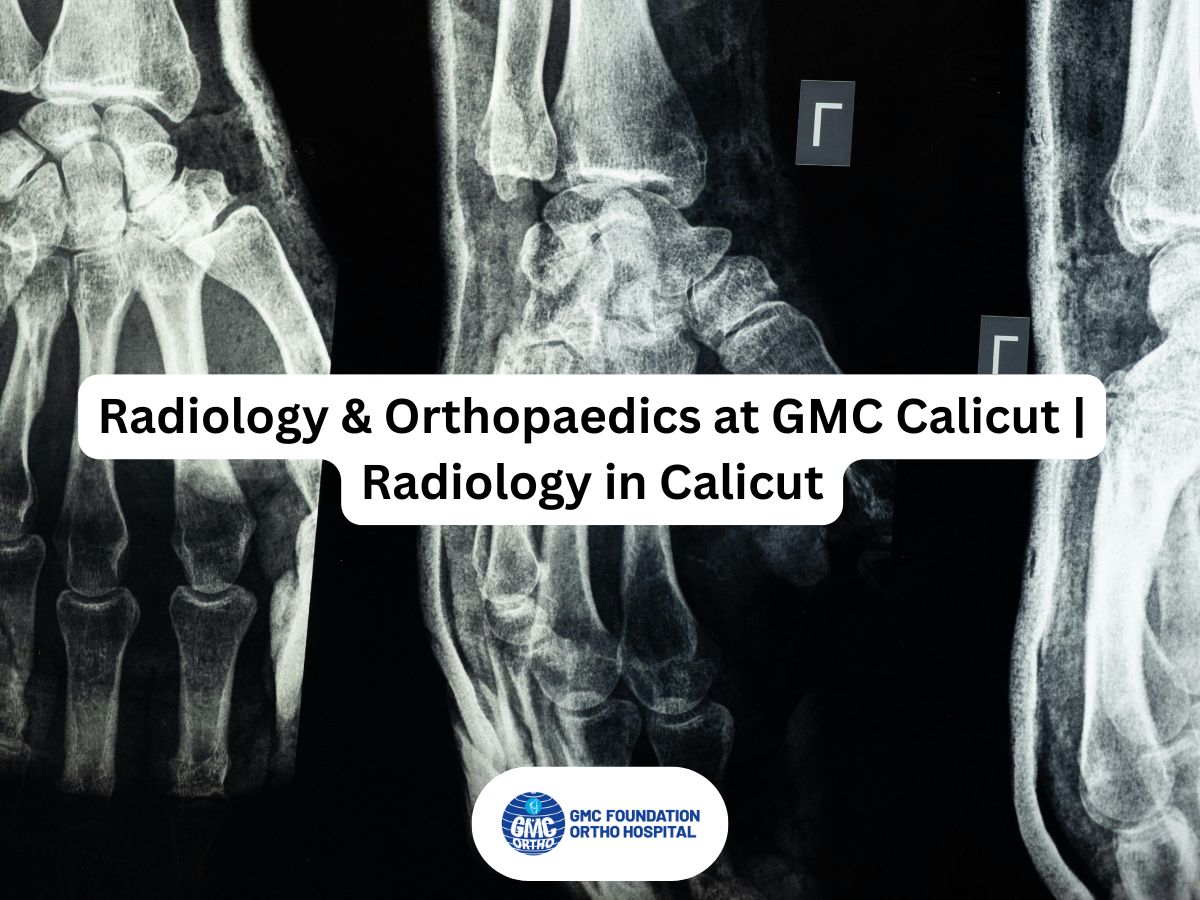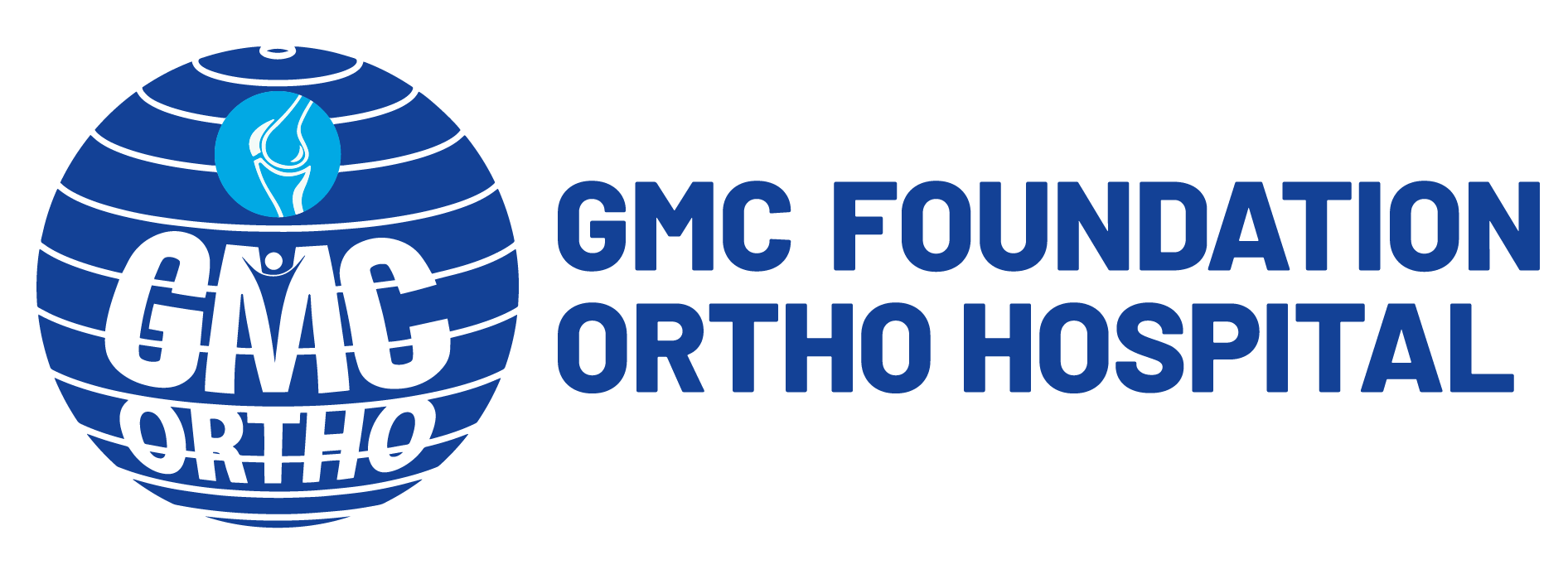Book an Appointment
Note: This is an appointment request only Depending on the availability of the consultant, appointment will be confirmed to you through mail/call The appointment requests can be made minimum 48 hrs in advance

Radiology & Orthopaedics at GMC Calicut | Radiology in Calicut
October 13, 2025What is Radiology, and Why is it Crucial for Orthopaedics
Radiology (or radiodiagnosis) is the medical specialty that uses imaging modalities — X-rays, ultrasound, CT (Computed Tomography), MRI (Magnetic Resonance Imaging), occasionally more advanced interventional procedures — to visualize internal structures of the body. For orthopaedics (bones, joints, ligaments, etc.), radiology is foundational. It helps in:
-
Diagnosing fractures, dislocations, deformities.
-
Evaluating alignment and integrity of bone and joint structures.
-
Planning surgery: e.g. knowing how bad a fracture is, whether a ligament or tendon is involved.
-
Follow-up to check healing, alignment, implants.
-
Detecting complications — infections, non-union, implant failures, etc.
Without quality radiology services, orthopaedic care becomes guesswork rather than evidence-guided.
GMC Ortho Trust / Specialty Ortho Hospital: Orthopaedic Side & Radiology Integration
To meet growing demand for specialised orthopaedic care, the GMC Ortho Trust and GMC Specialty Ortho Hospital have been established. Key features:
-
They offer a superspeciality orthopaedic service under one roof: fracture and trauma care, spine surgery, shoulder & elbow surgery, foot & ankle surgery, pediatric orthopaedics, limb reconstruction, etc. GMC Ortho Hospital
-
Radiology is part of the services offered in the ortho speciality hospital. The radiology department helps with diagnosis, controls imaging protocols, supports pre-operative and post-operative assessments. It ensures the orthopaedic surgeons have the imaging they need. GMC Ortho Hospital+1
-
The Ortho hospital offers modern operating theatres, ICU, supervised rehabilitation, physiotherapy and imaging support. Having imaging close by (in the same hospital) reduces delays between diagnosis and treatment. GMC Ortho Hospital+2GMC Ortho Hospital+2
Strengths and Achievements
-
Volume & variety
GMC handles large numbers of radiological investigations daily. The volume gives experience and reliability. The ortho specialty centre handles varied orthopaedic problems across age groups, from trauma to deformities. The presence of advanced imaging helps in dealing with complicated cases. -
Integration of services
When orthopaedics and radiology are well-coordinated, patient flow improves — faster diagnosis, timely surgery, better monitoring. Having radiology under the same umbrella (Ortho hospital) helps reduce time loss, errors, repeat imaging. -
Teaching & Training
Being a medical college, GMC trains residents in radiodiagnosis. Exposure to high case loads across imaging modalities helps build competence. Similarly, orthopaedic residents benefit from availability of imaging and hands-on surgical exposure with imaging guidance. -
Accessibility
GMC serves a large population of North Kerala, often providing services at more affordable costs than many private centres. The presence of a public medical college with quality imaging and orthopaedic surgery helps reduce inequalities.
Challenges & Limitations
While there are definite strengths, there are also challenges that limit optimum performance:
-
Equipment capacity & modernisation
Although GMC has CT and MRI machines, the number of MRIs handled daily is lower (e.g., ~43 MRIs on sample days vs. much higher need). More machines or faster throughput (machines with higher field strength, better coils, faster sequences) would help reduce waiting times. Maintenance, upgrades, newer imaging modalities (e.g. 3 Tesla MRI, advanced MRI sequences, newer CT innovations) are required. -
Staffing & specialization
Having committed, trained radiologists is good, but sub-specialization (musculoskeletal radiology, interventional radiology) could be improved. Musculoskeletal MRI interpretation, for instance, benefits from radiologists who focus on ortho imaging, which may need additional training or recruitment. -
Turnaround time
With high volume, ensuring quick reporting, especially for urgent orthopaedic work (trauma, fractures) is crucial. Delays in imaging or reporting can delay surgery, increase suffering, risk complications (non-union, infection). -
Interventional support & image-guided procedures
Some orthopaedic procedures benefit from radiologic guidance intraoperatively (e.g. navigation, fluoroscopy, image-guided fixation). While X-ray fluoroscopy is typically available, more advanced support (real-time CT, intraoperative MRI, navigation) may be limited. -
Patient awareness, cost, access
Even when services exist, patients might find delays due to scheduling, cost (though public institutions are subsidised), or lack of awareness of which imaging modality is best. Insurance or government schemes may not cover all investigations equally.
What the Future Could Hold / Recommendations
To further improve the radiology-orthopaedic continuum at GMC Calicut, several steps could be considered:
-
Upgrade imaging infrastructure
Increase MRI machines, especially high-field MRI (3T), ensure modern CT scanners (multi-slice, faster, lower radiation) to reduce scan times and improve image quality. Invest in MUSK imaging software for better cartilage, ligament and tendon imaging. -
Sub-specialty radiology teams
Having dedicated musculoskeletal radiologists, as well as interventional radiologists to support procedures like oncologic bone tumor biopsies, image guided pain management, etc. -
Interoperable systems & PACS (Picture Archiving and Communication System)
Fully operational PACS to allow radiologists and orthopaedic surgeons to view images remotely, annotate, compare prior studies. This speeds up diagnosis and improves surgical planning. -
Image guidance in surgery
Integrate intraoperative imaging (fluoroscopy, C-arm, navigation systems) for fracture fixation, joint replacement, etc. Better imaging guidance reduces surgical error, improves outcomes. -
Patient flow and reporting efficiency
Prioritize urgent imaging, streamline scheduling, ensure radiology reports are delivered rapidly to treating orthopaedic teams. Perhaps a triage system where emergencies (fractures, acute trauma) are fast-tracked. -
Continuous training & research
Encourage research in orthopaedic imaging, hold workshops, case conferences between orthopaedics and radiology to improve mutual understanding. Also keep up with advances: ultrasound elastography, diffusion MRI, etc. -
Public awareness and affordability
Outreach to inform patients about when imaging is needed, what investigations involve, expected wait times and costs. Expand subsidies or governmental help if possible for expensive imaging.
